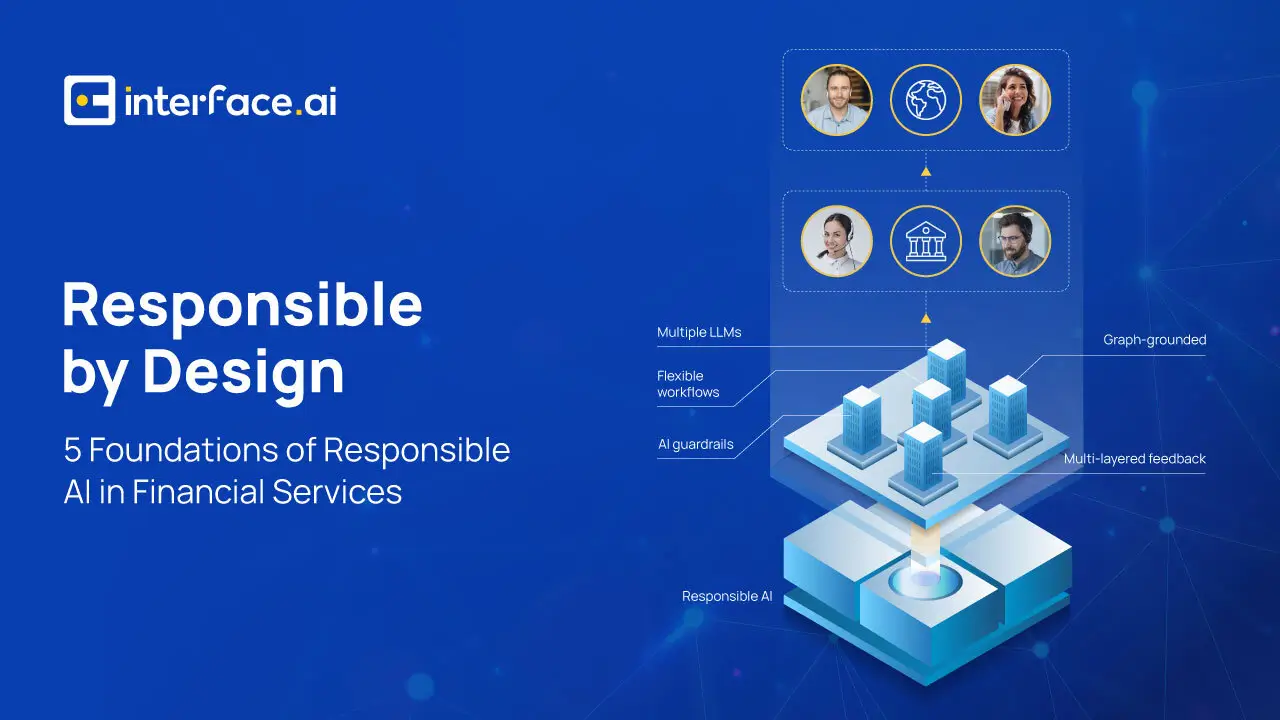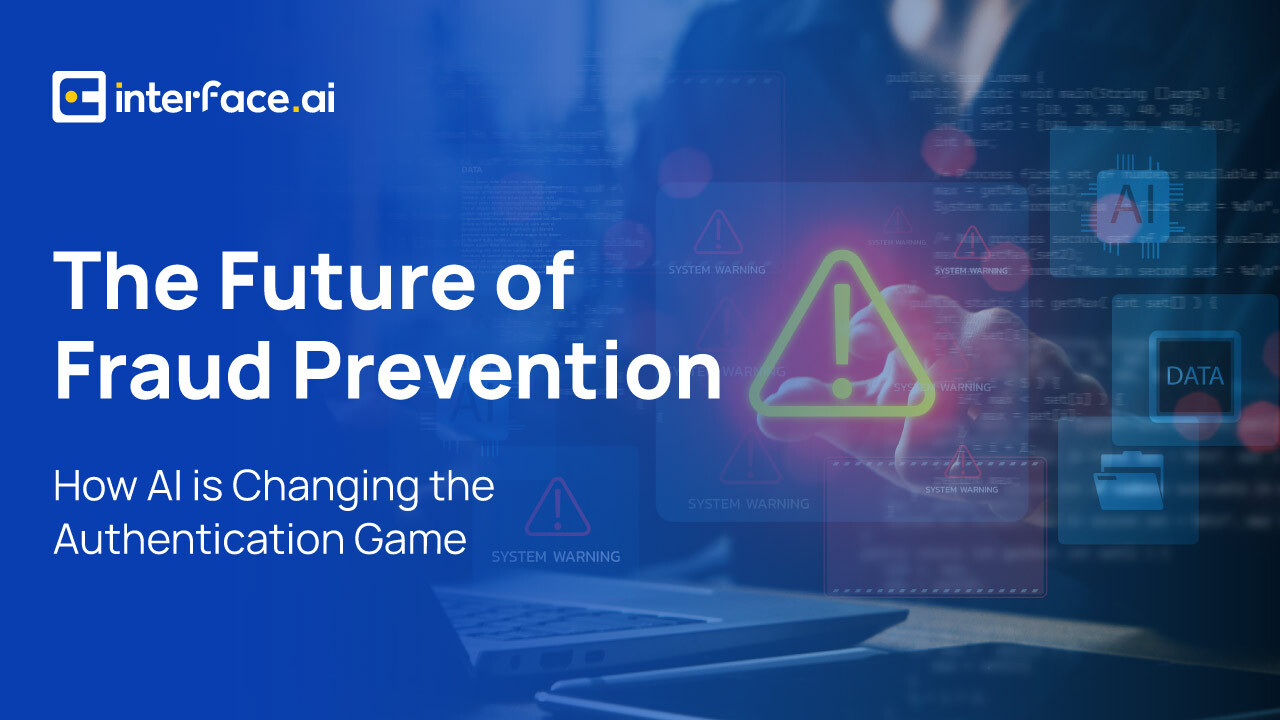
Responsible by Design – 5 Foundations of Responsible AI in Financial Services
The banking industry has more potential than any other to benefit from AI and Generative AI, according to Accenture’s latest AI report. And yet with this great promise comes ethical, compliance, and security risks.
From these challenges, Responsible AI has been born – an initiative to ensure AI is deployed in an ethical, transparent, and accountable approach. But what Responsible AI foundations can and should organizations put in place? How can banks and credit unions ensure the technology they use is responsible by design, embedding safeguards and establishing robust governance frameworks that continually adapt to AI advancements?
In this blog we will answer the following questions:
- What is Responsible AI?
- What are the most essential Responsible AI foundations?
- How can financial services deploy and maintain Responsible AI?
What is Responsible AI?
Responsible AI emerged as a hot topic in the mid to late 2010s as AI adoption spread in customer service environments. The proliferation of AI-powered tools like chatbots and virtual assistants forced organizations and governments to consider the technology’s ethics, bias, and accountability issues. Now, almost 70% of Fortune 500 companies that mentioned GenAI in their latest annual report did so in the context of risk disclosures.
Responsible AI has also emerged as a key priority for the U.S. government. In August 2024, the Biden-Harris administration announced a new initiative – “Time is Money” – against corporations and technology that impose time-and-money-wasting practices on consumers. The initiative focuses on the shortcomings of customer service chatbots and the frustration of ‘doom loops’ – cycles that trap customers in automated systems, unable to reach a live agent or find a resolution.
So what is Responsible AI? Accenture defines it as “the practice of designing, building and deploying AI in a manner that empowers employees and businesses and fairly impacts customers and society.”
The goals of Responsible AI are to ensure that AI is applied safely and ethically. This includes considering the long-term impacts on social responsibility, as well as accountability. Here are some of the major risks of AI, as outlined by Accenture in ‘The Age of AI: Banking’s New Reality’:
- Bias and harm: AI can lead to unfair or biased decisions in areas like marketing, credit, and customer service, as well as spread misinformation and toxic content.
- Liability and compliance: Many organizations’ current model risk management standards don’t sufficiently address AI risks. This can result in fines, legal actions, and reputational damage.
- Unreliable outputs: GenAI is prone to errors and hallucinations which can confuse or even harm customers.
- Confidentiality and security: Without proper controls, AI could expose confidential information, increasing the risk of data breaches and consumer protection failures.
- Sustainability: Heavy reliance on AI may raise a bank’s carbon footprint, jeopardizing ESG goals.
- Workforce transition: AI could lead to job losses and, without proper training, a widening skills gap.
It’s also worth noting the inherent dangers of using off-the-shelf Large Language Models (LLMs), rather than customized AI solutions tailored for financial services. While off-the-shelf LLMs provide general capabilities, they lack industry-specific knowledge, compliance frameworks, and security measures that are needed to operate responsibly in highly regulated environments. interface.ai offers the solution with a responsible by design approach – here’s how.
How interface.ai helps financial services deploy & maintain Responsible AI
Since 2015, interface.ai has led the way for AI in financial services, spearheading the development and deployment of Responsible AI. As a result, the platform architecture is responsible by design – grounded in principles that ensure responsible and ethical AI practices. With multiple LLMs at the core, supported by a host of tools, features, and guardrails, the system ensures the solutions are not only powerful, but also responsible.
interface.ai is now the only Generative AI solution for financial services that fully complies with regulatory requirements and best practices.
Here are some of the Responsible AI foundations that interface.ai’s system is built upon to ensure financial services can deliver, promote, and maintain Responsible AI services.
- Multiple LLMs: One-size-doesn’t-fit-all
Some AI providers rely on a single LLM to power their solutions, whereas interface.ai uses a mixture of models known as a ‘mixture of experts’. The results are starkly different. A single LLM is built to handle a variety of tasks rather than specialize in a specific area. This generalization often means it struggles to meet the nuanced, domain-specific demands of financial services, leading to inaccuracies, bias, and even non-compliance.
In contrast, interface.ai uses a mixture of models that ensures each task is handled by the most appropriate model. Each LLM in this system is tailored to excel at a specific type of task. As a result, the system minimizes errors and bias that undermine Responsible AI principles.
- Graph-grounded: Domain-specific knowledge
A key foundation of Responsible AI is ensuring accuracy and avoiding bias. interface.ai’s system helps to ensure this through graph-grounded knowledge. All AI responses are grounded on our proprietary, domain-specific knowledge graph, built on the back of millions of historical conversations. This ensures that the information provided to customers is accurate, consistent, and based on verified data, reducing the risk of misinformation and biased responses.
- Multi-layered feedback: Smart automation, human understanding
interface.ai is built upon a multi-layered feedback system to enhance the accuracy and reliability of AI responses. It operates on two levels: automated analysis and human review, often referred to as human-in-the-loop (HITL). These work together to identify and fix input and output errors. If found, the automated analysis either corrects in real-time, or flags them. HITL then allows for human reviewers to step in and assess the issues. This brings in contextual understanding and ethical considerations that AI might struggle to comprehend.
- Flexible workflows: Control gives you confidence
interface.ai’s GenAI chatbot can be built in minutes on your existing content, providing immediate responses to your common queries. However, in some instances there will be scenarios that financial services would like to have greater control over. For these situations, workflows are needed – predefined, structured sequences of actions that guide how a bot interacts with a user.
interface.ai has developed breakthrough, proprietary technology that enables these workflows to override the standard Generative AI response. These provide a flexible framework ( (no-code/low-code/white-glove) to give organizations control over the AI’s behavior and ensure it meets ethical standards, regulatory requirements, company policies, and societal norms.
- AI guardrails: Keeping on the right track
AI guardrails are a central component of interface.ai’s Responsible AI approach. They enforce accuracy and regulatory compliance across all interactions, and ensure complete verifiability and auditability. interface.ai is the only Generative AI solution for financial services that fully complies with regulatory requirements and best practices. Here are just a few examples of the guardrails.
Firstly, interface.ai is the only AI provider for financial services that delivers the most secure trifecta of risk-based authentication – AI, biometrics and caller ID. This unique approach creates a multi-layered defense system that verifies user identity to significantly reduce the risk of data breaches.
interface.ai’s system is also built with an integration layer that serves as a gateway between the platform and the core banking systems it integrates with. This layer acts as a security barrier, ensuring that only authorized and properly validated requests from interface.ai’s system can access the core banking systems.
interface.ai’s auditable processing engine is another crucial component of its AI architecture that fuels Responsible AI. The engine records every action and decision made by the AI, creating a detailed log that can be reviewed at any time. This includes not just the final decision but also the reasoning process behind it, such as which data inputs were considered and how the AI interpreted them. This provides complete transparency and ensures the organization is complying with strict regulatory regulations that require clear documentation and accountability for all decisions.
Wrap-up
interface.ai’s AI solutions are responsible by design. They are built to both drive business success and uphold the highest standards of responsible and ethical AI usage for financial services.
And crucially, this industry-leading innovation never concludes. Our proprietary AI systems continuously evolve through automated feedback mechanisms, perpetually learning from every real-word interaction. This ensures our technology adheres to the key Responsible AI foundations so we can safeguard our customers and continue to lead the responsible development of AI in financial services.
Learn more about interface.ai’s purpose-built AI solutions for financial institutions, powered by one conversational AI brain and proprietary Generative AI.
AI Insights for Credit Union & Community Bank Leaders
Join the monthly newsletter for all the latest industry updates

